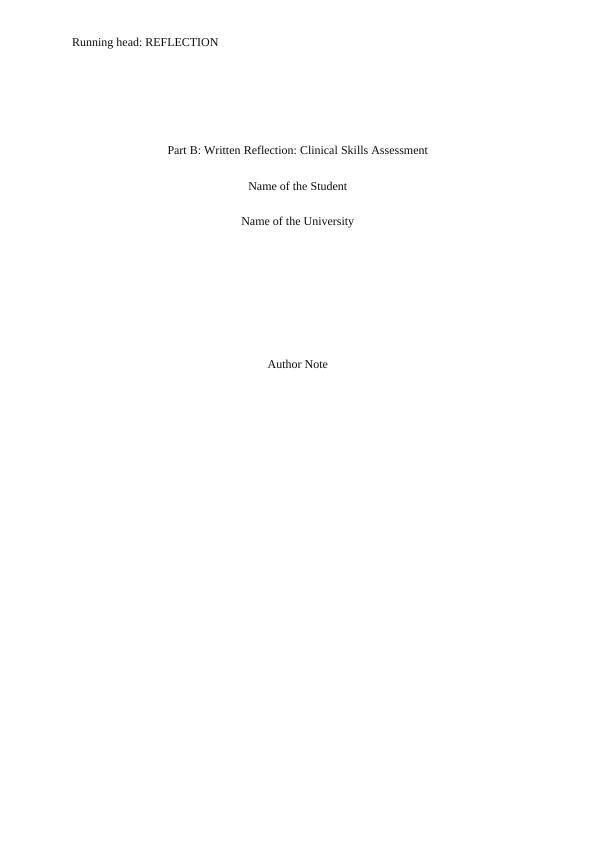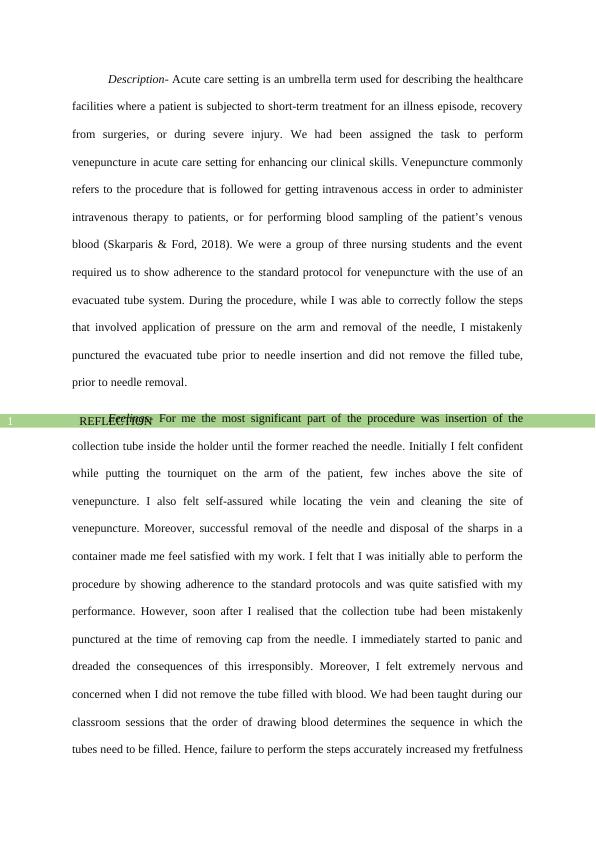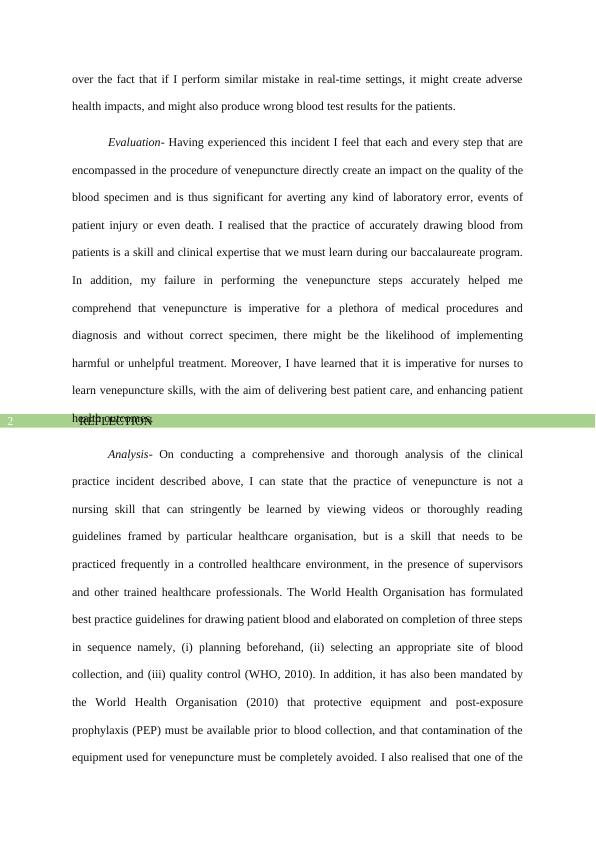Reflection on Clinical Skills Assessment in Acute Care Setting
This assignment requires students to reflect on their clinical practice preparation, feelings, self-evaluation, analysis, and action plan in the context of acute nursing.
6 Pages1514 Words444 Views
Added on 2022-11-01
About This Document
This reflection is about the clinical skills assessment in acute care setting, specifically about venepuncture. It discusses the importance of adhering to standard protocols and the consequences of not doing so. It also provides an action plan to prevent such mistakes in the future.
Reflection on Clinical Skills Assessment in Acute Care Setting
This assignment requires students to reflect on their clinical practice preparation, feelings, self-evaluation, analysis, and action plan in the context of acute nursing.
Added on 2022-11-01
ShareRelated Documents
End of preview
Want to access all the pages? Upload your documents or become a member.
Reflection on OSCE Venepuncture
|6
|1567
|185
Reflection on Clinical Skills Assessment in Nursing Simulation
|6
|1675
|89
Reflective Essay on Subcutaneous Injection as Clinical Teaching
|9
|2282
|445
Reflection on Administering IV Zofran Injection
|6
|1345
|42
Gibb's Reflection
|8
|1753
|1
Nursing Portfolio: Reflective Learning and Nursing Governance Framework
|9
|2575
|318



